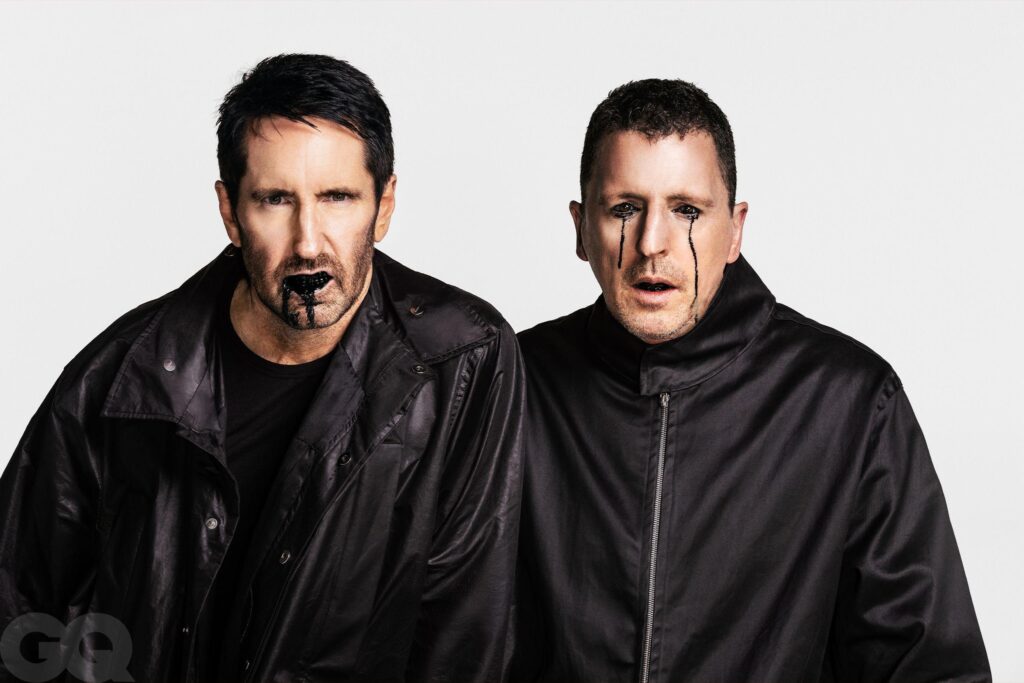Reznor and Ross Celebrate Cinematic Soundscapes at Future Ruins Festival
In a unique celebration of the art of film and television scoring, acclaimed composers Trent Reznor and Atticus Ross are set to host the inaugural Future Ruins Festival. Taking place in [location], the festival will showcase a diverse array of score selections that have defined cinematic experiences over the years. Known for their innovative work on projects such as “The Social Network” and “Watchmen,” Reznor and Ross aim to honor the genre while also providing a platform for emerging talents. The event promises engaging performances, insightful discussions, and a retrospective look at the evolution of music in visual storytelling. As the festival approaches, excitement builds among fans and industry insiders alike, eager to delve into the haunting melodies and atmospheric compositions that have shaped the landscape of modern cinema.
Reznor and Ross Shine Spotlight on Iconic Film and TV Scores at Future Ruins Fest
Grammy-winning duo Trent Reznor and Atticus Ross took center stage at the Future Ruins Fest, captivating audiences with a dynamic showcase of their beloved film and television scores. The event highlighted an array of compositions that transcended genres, immersing attendees in a blend of nostalgia and innovation. Among the standout pieces were selections from their acclaimed work on “The Social Network”, “Gone Girl”, and the haunting theme for the hit series “Watchmen.” Fans were treated to a live performance that seamlessly bridged the worlds of cinema and modern music, illustrating Reznor and Ross’s unique ability to evoke emotion through sound.
The festival also featured an engaging discussion panel, where the duo elaborated on their creative process and the inspiration behind their scores. As they delved into their collaborative journey, they shared insights on pivotal moments that shaped their artistic vision. Key topics included:
- Collaborative Synergy: How their partnership has evolved over the years.
- Score Composition: Techniques used for crafting emotionally driven music.
- Influence of Technology: The impact of digital tools on modern scoring methods.
| Film/TV Title | Release Year | Notable Award |
|---|---|---|
| The Social Network | 2010 | Academy Award for Best Original Score |
| Gone Girl | 2014 | Golden Globe Nomination |
| Watchmen | 2019 | Emmy Award for Outstanding Original Main Title Theme Music |
Behind the Scenes: The Creative Process of Scoring for Film and Television
As Trent Reznor and Atticus Ross gear up for the Future Ruins Festival, fans are given a rare glimpse into the intricate art of scoring for film and television. The duo, renowned for their haunting soundscapes, cleverly intertwines their approach to composition, drawing inspiration from a myriad of sources. In shaping the sonic identity of films, they often embark on an extensive exploration of themes, utilizing tools such as synthesizers and live instrumentation to evoke profound emotional reactions. Their collaboration exemplifies how scores can not only enhance storytelling but also become a narrative force in their own right.
Throughout their creative process, various stages are crucial to developing a compelling score. Collaboration stands as a pivotal factor, as both Reznor and Ross meld their unique perspectives and skills. They often utilize feedback loops, inviting directors and producers into the fold to refine their compositions. In addition, they experiment with different genres, enabling them to create a dynamic range of sound that resonates with the film’s atmosphere. The following table illustrates the key elements of their scoring process:
| Element | Description |
|---|---|
| Theme Development | Creating motifs that embody the film’s emotional core. |
| Sound Design | Incorporating non-traditional instruments to enhance mood. |
| Layering | Building complexity through orchestration and effects. |
| Feedback Integration | Refining sound through director and producer input. |
Audience Recommendations for an Unforgettable Experience at Future Ruins Fest
As attendees prepare for the Future Ruins Fest, make the most of this unique celebration of film and TV scores by keeping these recommendations in mind. Arrive Early to soak in the atmosphere and explore the various installations that highlight the intersection of film, music, and art. Consider taking part in the interactive panels scheduled throughout the event, where insights from composers like Reznor and Ross will provide a deeper understanding of their creative processes. Don’t forget to bring along your favorite merchandise for signing opportunities—personalized memorabilia adds a special touch to your festival experience.
For those looking to enhance their audio-visual journey, curate your festival schedule thoughtfully, prioritizing the live performances and Q&A sessions. Check out our recommended lineup featuring some of the most iconic scores being celebrated, such as:
| Performance Time | Featured Score | Artists |
|---|---|---|
| 12:00 PM | Social Network | Reznor & Ross |
| 1:30 PM | Watchmen | Trent Reznor |
| 3:00 PM | Gone Girl | Reznor & Ross |
Networking is crucial at such gatherings, so don’t hesitate to strike up a conversation with fellow fans or industry professionals. Have your favorite score in mind to share, or ask others about theirs—a rich exchange of ideas and passions is sure to enhance everyone’s experience at this memorable festival.
Concluding Remarks
As the Future Ruins Fest concludes, Trent Reznor and Atticus Ross have not only celebrated the profound impact of film and television scores but have also solidified their legacy within the world of cinematic music. With a lineup that showcased emerging talents alongside established icons, the festival highlighted the transformative power of sound in storytelling. Attendees left with a deeper appreciation for the art of scoring, as well as inspiration for the future of the genre. As Reznor and Ross continue to push creative boundaries, the Future Ruins Fest marks just the beginning of an ongoing dialogue about the significance of music in visual media. This event not only honors the past but also paves the way for future innovations in film and TV scoring.
